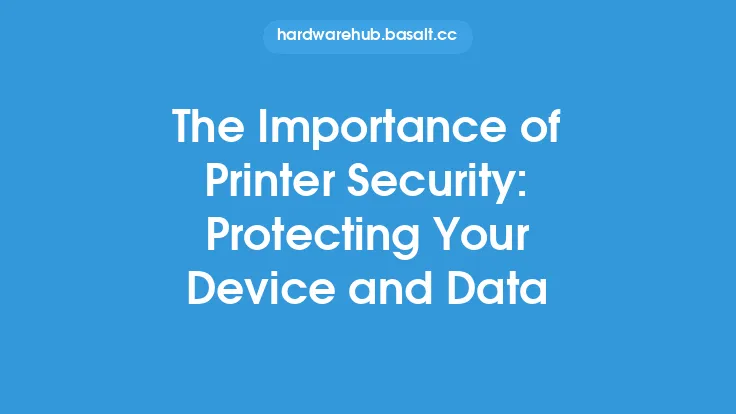Encryption is a crucial aspect of storage security, as it ensures that data is protected from unauthorized access, even if the storage device falls into the wrong hands. In today's digital age, where data breaches and cyber attacks are becoming increasingly common, encryption has become an essential tool for safeguarding sensitive information. In this article, we will delve into the importance of encryption in storage security, exploring its benefits, types, and implementation methods.
What is Encryption?
Encryption is the process of converting plaintext data into unreadable ciphertext, using a complex algorithm and a secret key. This transformation makes it impossible for unauthorized parties to access the data, as they would need the decryption key to revert the ciphertext back to its original form. Encryption can be applied to various types of data, including files, folders, and entire storage devices. The encryption process involves a series of steps, including key generation, encryption algorithm selection, and data transformation.
Benefits of Encryption
The benefits of encryption in storage security are numerous. Firstly, encryption ensures confidentiality, as only authorized parties with the decryption key can access the encrypted data. This protects sensitive information from unauthorized access, even if the storage device is lost, stolen, or compromised. Secondly, encryption ensures integrity, as any attempts to modify or tamper with the encrypted data would be detectable. Finally, encryption provides authenticity, as the decryption key can be used to verify the identity of the data owner.
Types of Encryption
There are several types of encryption algorithms, each with its own strengths and weaknesses. Symmetric encryption algorithms, such as AES (Advanced Encryption Standard), use the same key for both encryption and decryption. Asymmetric encryption algorithms, such as RSA (Rivest-Shamir-Adleman), use a pair of keys: a public key for encryption and a private key for decryption. Hash-based encryption algorithms, such as SHA (Secure Hash Algorithm), use a one-way function to transform data into a fixed-length string. Each type of encryption algorithm has its own use cases and applications, and the choice of algorithm depends on the specific storage security requirements.
Implementation Methods
Encryption can be implemented in various ways, depending on the storage device and the level of security required. Full-disk encryption (FDE) involves encrypting the entire storage device, including the operating system, files, and folders. File-level encryption involves encrypting individual files or folders, using a separate encryption key for each file. Folder-level encryption involves encrypting entire folders, using a separate encryption key for each folder. Hardware-based encryption involves using a dedicated hardware component, such as a Trusted Platform Module (TPM), to perform encryption and decryption operations.
Key Management
Key management is a critical aspect of encryption, as it involves generating, distributing, and managing encryption keys. A robust key management system should include features such as key generation, key storage, key rotation, and key revocation. Key generation involves creating a unique encryption key for each storage device or data set. Key storage involves securely storing the encryption key, using a secure key store or a hardware security module (HSM). Key rotation involves periodically changing the encryption key, to minimize the risk of key compromise. Key revocation involves revoking the encryption key, in case of a security breach or key compromise.
Best Practices
To ensure effective encryption in storage security, several best practices should be followed. Firstly, use a robust encryption algorithm, such as AES, to ensure confidentiality and integrity. Secondly, use a secure key management system, to generate, distribute, and manage encryption keys. Thirdly, implement encryption at the storage device level, using FDE or hardware-based encryption. Fourthly, use secure protocols, such as SSL/TLS, to protect data in transit. Finally, regularly monitor and audit encryption systems, to detect and respond to security breaches.
Technical Considerations
From a technical perspective, encryption in storage security involves several considerations. Firstly, encryption can impact storage device performance, as encryption and decryption operations can consume system resources. Secondly, encryption can impact data recovery, as encrypted data may be difficult to recover in case of a storage device failure. Thirdly, encryption can impact compatibility, as different encryption algorithms and protocols may be incompatible with certain storage devices or systems. Finally, encryption can impact scalability, as large-scale encryption deployments may require significant system resources and infrastructure.
Conclusion
In conclusion, encryption is a critical aspect of storage security, as it ensures confidentiality, integrity, and authenticity of sensitive data. By understanding the benefits, types, and implementation methods of encryption, organizations can effectively protect their data from unauthorized access. By following best practices and considering technical factors, organizations can ensure robust encryption in storage security, and minimize the risk of data breaches and cyber attacks. As data storage and security continue to evolve, encryption will remain a vital component of storage security, protecting sensitive information from unauthorized access and ensuring the integrity of digital assets.





